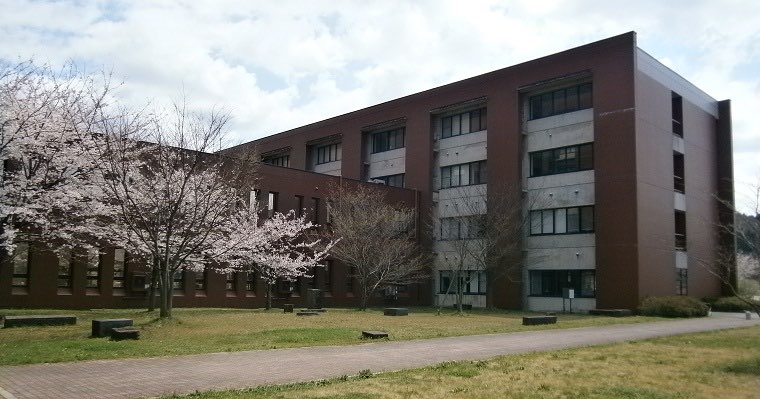
金沢解析セミナー
Kanazawa Analysis Seminar

Kanazawa Analysis Seminar
The theory of optimal transportation, dating back to Gaspard Monge’s work in 1781, continues to develop at pace as one of the fundamental mathematical theories with an ever- growing list of diverse applications in fields such as economics, computer vision, image processing and machine learning. A central challenge in many applications concerns finding a representative, or barycentric (probability) distribution, which provides some average description of a given set of distributions. The basic optimal transport approach to this problem is to find the barycenter by minimizing the sum of weighted two-marginal optimal transport costs between the barycenter and each input distributions. In a seminal contribution by Agueh and Carlier [1], it was subsequently shown that an equivalent and computationally favourable approach is to instead solve a single least-cost multi-marginal optimal transport problem.
If the input distributions do not all have equal mass, an unbalanced barycenter can be found via a recourse to the emerging theory of unbalanced optimal transportation. This, however, can be done in a number of ways, depending on how one penalises mass deviations, what cost function is employed and whether one wishes to consider the conic formulation — see the detailed discussion in [2].
In this talk, I will introduce the above ideas in an accessible manner, followed by presenting several results on how to recover the celebrated least-cost multi-marginal formulation of Agueh and Carlier in the unbalanced setting [3].
[1] M. Agueh and G. Carlier. Barycenters in the Wasserstein space. SIAM Journal on Mathematical Analysis 43.2 (2011), pp. 904–924.
[2] M. Liero, A. Mielke, and G. Savaré. Optimal entropy-transport problems and a new Hellinger– Kantorovich distance between positive measures. Inventiones mathematicae 211.3 (2018), pp. 969– 1117.
[3] M. Buze. Constrained Hellinger-Kantorovich barycenters: least-cost soft and conic multi-marginal formulations. arXiv e-prints, 2402.11268, 2024 (to appear in SIAM Journal on Mathematical Analysis).
Hybrid
Coupled nonlinear degenerate systems arise in various applications of societal relevance, such as biofilm growth, wildfires, and reactive transport in porous media. One of the equations in the system, describing the evolution of a biomass, exhibits degenerate and singular diffusion behaviour. The other equations are either of advection-reaction-diffusion type or ordinary differential equations modelling nutrient dispersion. In our analysis, we first propose a backward Euler time-discretization of the problem where the reactive terms coupling the equations are estimated semi-implicitly, and thus, the equations can be solved sequentially. Properties such as well-posedness, boundedness, and positivity of the time-discrete solutions are proven, and the existence of the time-continuous solutions is shown by passing the time-step size to zero. Global- in-time well-posedness is established for Dirichlet and mixed boundary conditions, whereas only local well-posedness can be shown for homogeneous Neumann boundary conditions. Using a suitable barrier function and comparison theorems we formulate sufficient conditions for finite-time blow-up or uniform boundedness of solutions. Assuming additional structural assumptions we also prove the uniqueness of solutions. The time-discretization method serves as an efficient way to solve such problems and numerical experiments are provided that support this.
Then, we show the existence of traveling wave (TW) solutions for a special case of PDE-ODE coupled models arising in the growth of cellulolytic biofilms. TW solutions for such systems have previously been observed numerically as well as in experiments. Using the TW ansatz and a first integral, the system is reduced to an autonomous dynamical system with two unknowns. Analysing the system in the corresponding phase-plane, the existence of a unique TW is shown, which possesses a sharp front and a diffusive tail, and is moving with a constant speed. The linear stability of the TW in two space dimensions is proven under suitable assumptions on the initial data. We present numerical results that exhibit the existence and stability of the TWs, along with corroborating predictions on parametric dependence.
References
[1] K. Mitra, J.M. Hughes, S. Sonner, H.J. Eberl, & J.D. Dockery
(2023). Travelling Waves in a PDE– ODE Coupled Model of Cellulolytic
Biofilms with Nonlinear Diffusion. Journal of Dynamics and Differential
Equations, 1-35.
[2] K. Mitra, & S. Sonner (2023). Well-posedness and properties of
nonlinear coupled evolution problems modelling biofilm growth.
arXiv:2304.00175.
In electrical impedance tomography, we aim to solve the conductivity within a target body through electrical measurements made on the surface of the target. This problem, known as the inverse conductivity problem or Calderon problem, is notoriously ill-posed, especially in real applications with only partial boundary data available.
We discuss various approaches to modeling the inverse conductivity problem, the characteristics of these models, and the known regularity results. We then focus on the variational approach by considering the minimization of an energy regularized by the Mumford-Shah functional. As this minimization poses a significant challenge, we take the classical Ambrosio-Tortorelli approximation approach, showing its approximation properties for the inverse conductivity problem. Finally, we take a look at a few numerical examples.
A retarded functional differential equation (RFDE) is a differential equation describing the dependence of the time-derivative \dot{x}(t) of an unknown function x on the history segment x_t. The RFDEs gives a mathematical model of various delay differential equations (DDEs), and it determines an important class of infinite-dimensional dynamical systems as the time evolution of the history segment x_t in a space of continuous functions. In this talk, we develop a theory of “mild solutions” to autonomous linear RFDEs in order to resolve difficulties about discontinuous history functions in the theory of RFDEs. Furthermore, we apply it to an extension of the Poincaré–Lyapunov theorem to RFDEs.
参考文献 (References):
[1] J. Nishiguchi, Mild solutions, variation of constants formula, and
linearized stability for delay differential equations, Electron. J.
Qual. Theory Differ. Equ. 2023, No.~32, 1–77. https://doi.org/10.14232/ejqtde.2023.1.32.
[2] J. Nishiguchi, On regularity of mild solutions for linear delay
differential equations, submitted.
2013年4月,金沢大学の偏微分方程式研究者有志が集まり本セミナーを企画しました。各回の話題は,偏微分方程式の理論的な側面を中心に,セミナー幹事の関心に従い大らかに選択しています。参加者がセミナーを十分楽しみ,勉強し,新しい発見を得られるように,各回の最初の20分から30分程度,講演者の方にはその話題への導入となるような解説をお願いしています。ご関心がある方はどなたでもご自由にご参加ください。 どうぞよろしくお願いいたします。
Patrick van Meurs・大塚 浩史・小俣 正朗・蚊戸 宣幸・木村 正人・榊原 航也・Thomas Geert De Jong・野津 裕史・Norbert Pozar・Julius Fergy Tiongson Rabago
npozar (at) se.kanazawa-u.ac.jp